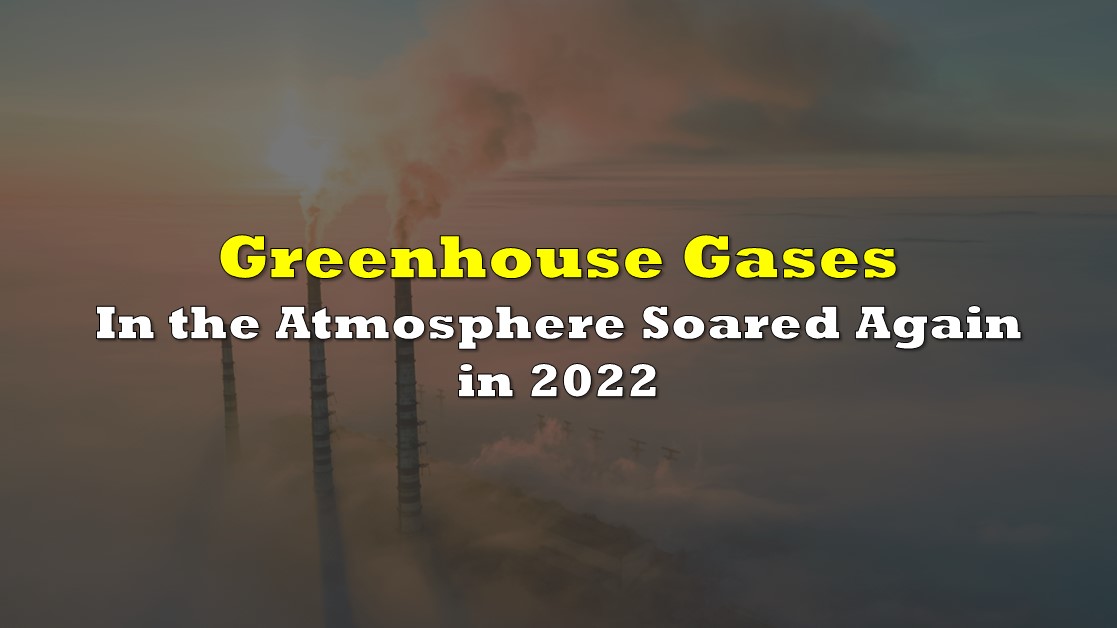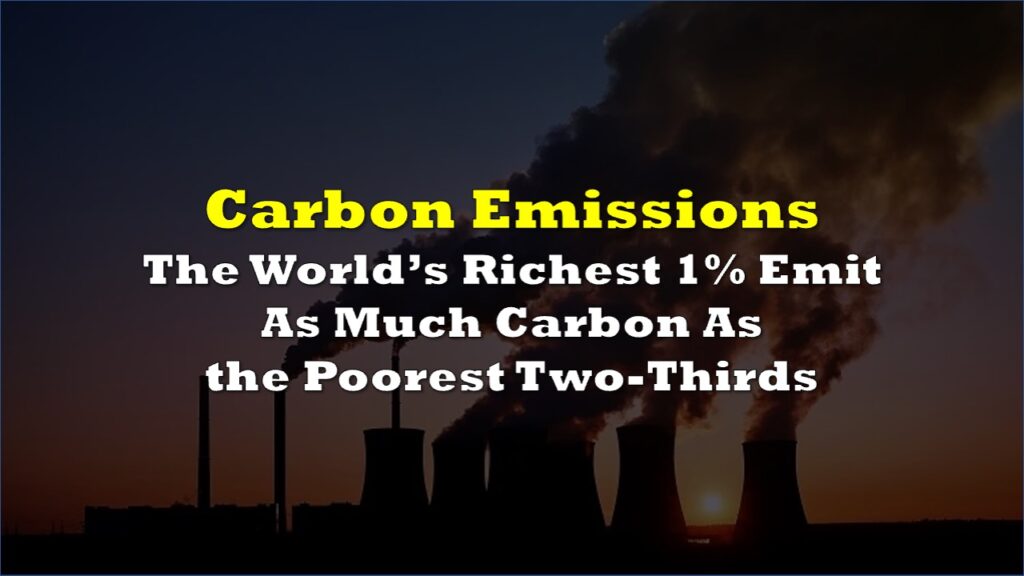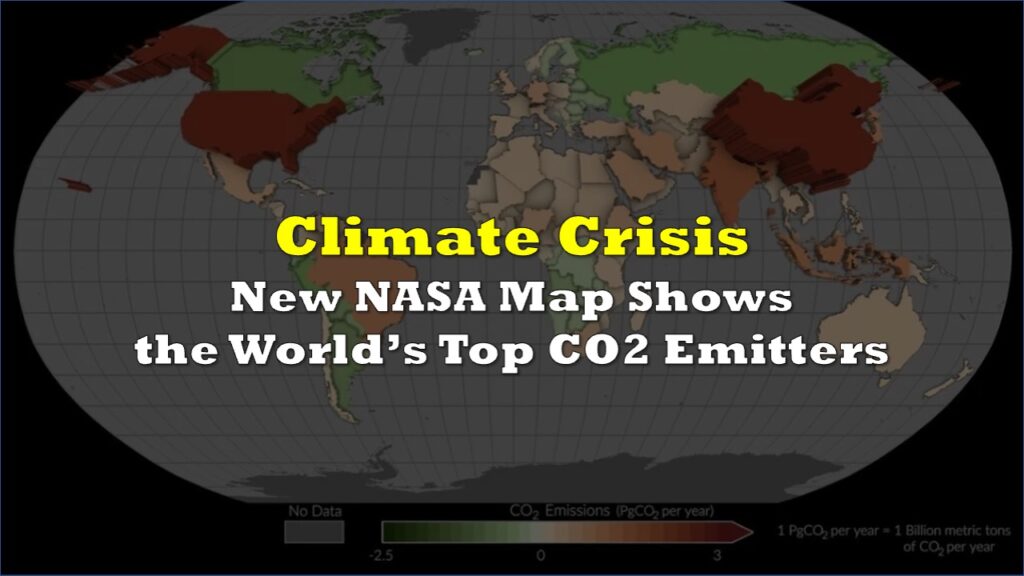On November 15th, the UN’s World Meteorological Organization (WMO) released an alarming — actually, downright scary — report on the quantity of greenhouse gases in the world’s atmosphere.
The two headlines are:
- The amount of carbon dioxide (CO2) in the atmosphere reached 420.2 parts per million (ppm) in November 2023, a level 50% higher than before the start of the Industrial Revolution. CO2 comprises around 64% of all long-lived greenhouse gases.
- Greenhouse gases are growing at an alarmingly fast and consistent pace. The WMO says “there is no end to this alarming trend.” In turn, this will likely cause even “more extreme weather [and] the socioeconomic and environmental costs will soar.”
The WMO says the world’s atmosphere has not experienced the current level of CO2 concentration in the last three to five million years, a time when global temperatures were two to three degrees Celsius warmer, and sea levels 10-20 meters higher than they are now.
Phrased differently, the concern about the 420 ppm (and rising) CO2 level is that most scientists and climate experts believe that 350 ppm is the “safe” reading for this greenhouse gas. When human civilization began, the concentration was about 275 ppm. In essence, the world’s population is now distributing millions of years of carbon stored beneath the earth into the atmosphere. CO2 emissions come primarily from energy production, including burning coal, oil and natural gas.
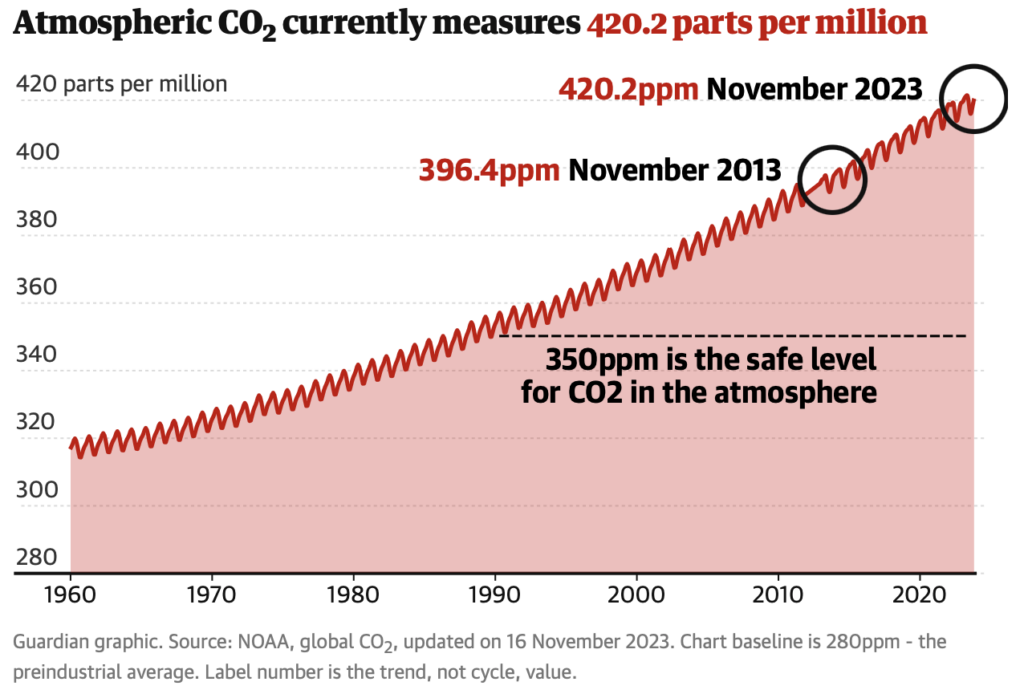
Similarly, methane (CH4) reached about 1,923 parts per billion (1.923 ppm) in 2022. CH4 represents about 19% of all greenhouse gases. About 60% of CH4 is created by humans through the fossil fuel industry, cattle, and waste dumps. The other 40% stems from natural sources like wetlands and termites.

Nitrous oxide (N2O) emissions grew at their fastest pace ever in 2022, reaching 336 parts per billion. N2O emissions account for about 6% of all greenhouse gases. Pollution in oceans and soils, biomass burning, fertilizer use, and industrial processes cause about 43% of N2O gases.
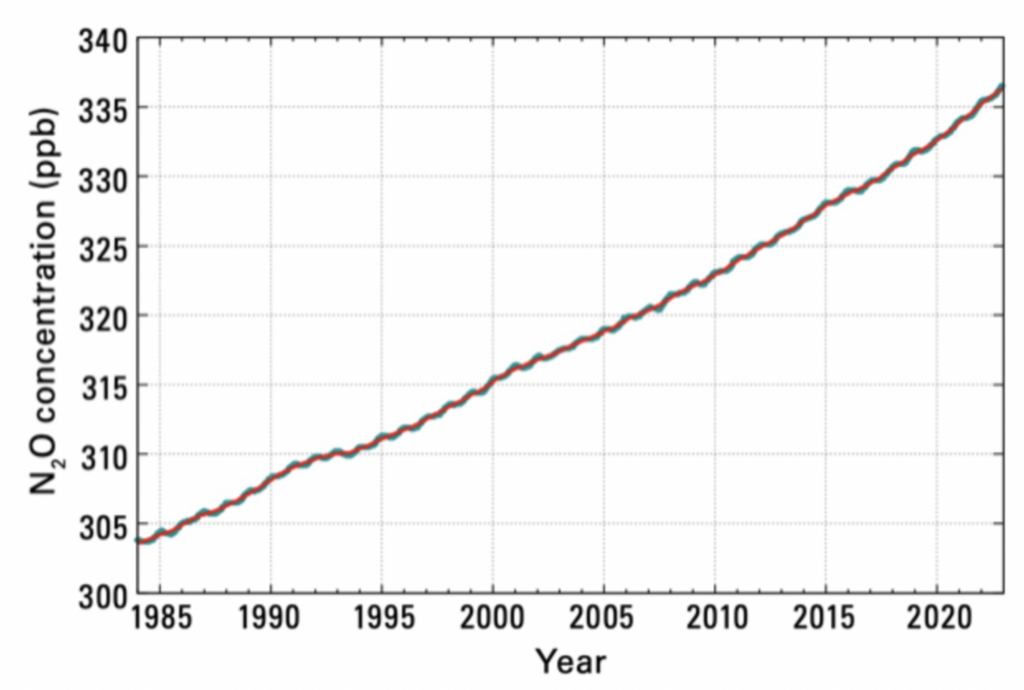
Information for this briefing was found via the United Nations and the sources mentioned. The author has no securities or affiliations related to this organization. Not a recommendation to buy or sell. Always do additional research and consult a professional before purchasing a security. The author holds no licenses.

